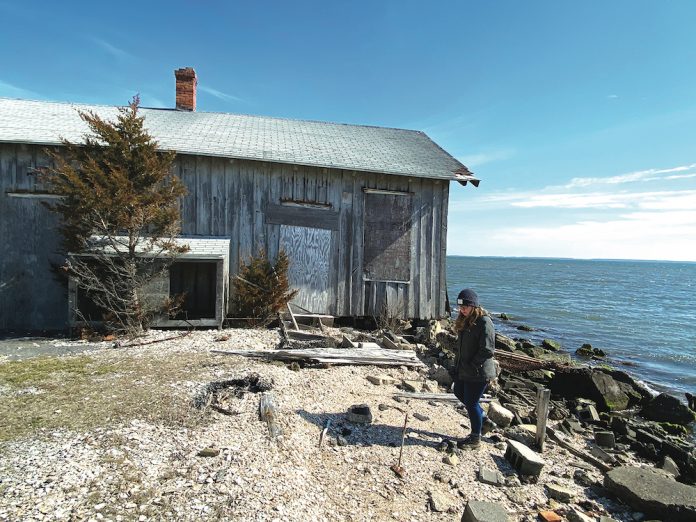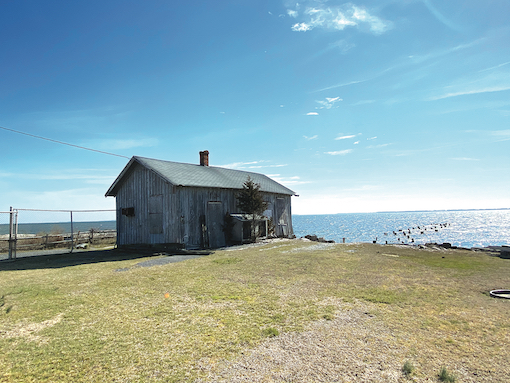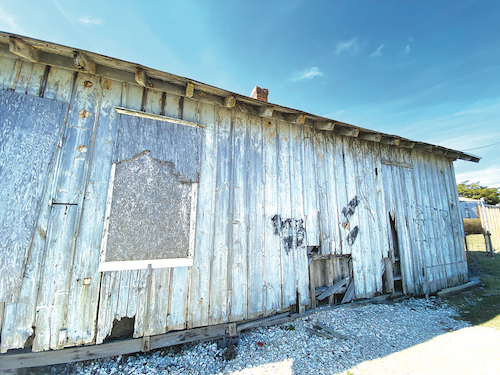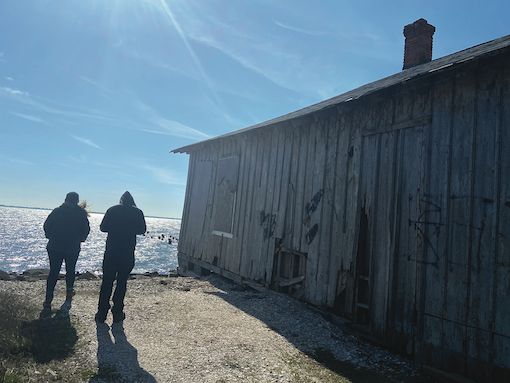
.

Chincoteague Bay Field Station, a marine science education consortium in Wallops, has an agreement with the U. S. Department of Education to use federally owned property on which the depot and another building are located. The field station uses the property for research and education, but does not use the buildings, which are in poor condition.
The site includes a living shoreline and a 30-acre salt marsh located directly on Chincoteague Bay. It is visited by many of the students and summer campers who come to the field station for a variety of programs.
Now the federal government wants both buildings removed.
One is a newer, classroom-type building and has no historic significance.
The other, however, does have significance as the original depot for the 19th-century settlement Franklin City — although it is not listed on the National Register of Historic Places.
“We have been instructed that we have to get rid of the buildings,” said Alverne Chesterfield, executive director of Chincoteague Bay Field Station.
The depot could be moved off the property, if someone would step up to do so.
“There’s no objection to that,” Chesterfield said.
It also could be restored, “but we don’t have the funds to do it,” he said.
The field station board of directors earlier this month directed him to seek bids from companies to demolish the buildings.

“The question is, is there somebody that may want to (move the depot),” Chesterfield said, adding, “We don’t want to just go in and demolish the building and not let the community know that this is what is going to be done — especially if it has some attachment to the community.”
Additionally, the depot needs to be moved soon in any case, if it is to be saved, because “if it is not, it is going to fall into the bay,” said Emily Foy, director of school programs and summer camps for Chincoteague Bay Field Station.
Storms have taken their toll over the years on the shoreline where the depot is perched.
“It is a safety concern…half of it is completely washed under,” she said.
The depot dates to when the railroad first came to the Eastern Shore of Virginia in 1876, when tracks were laid from Snow Hill, Md., to the area that would become Franklin City, near the bountiful oyster grounds of Chincoteague Bay.
That was years before the New York, Philadelphia and Norfolk Railroad built miles of track through Accomack County south to Cape Charles in 1884.
Maryland Judge John R. Franklin was a stockholder in the Frankfort & Worcester Railroad, which by the 1870s had built a line as far south as Snow Hill, according to historian Kirk Mariner. In 1876, Franklin was able to get the line extended to land he owned just south of the state line in Virginia.
Franklin planned and surveyed Franklin City, which was to have three main streets bisected by five others, according to Mariner.
Franklin envisioned a town of around 2,000, centered around the railroad.
By 1877, a post office and a hotel were established. By then, there also were a general store, several oyster-packing houses, and homes.
From the late 1870s through the mid-1890s, watermen harvested between 110,000 and 325,000 bushels of oysters a year from Chincoteague Bay, bringing much of that harvest to the Franklin City depot, where it was loaded on rail cars and shipped north.

The harvest went mainly to markets in New York and Philadelphia, according to a 2007 article in the journal Southern Spaces, “The Countryside Transformed: The Eastern Shore of Virginia, the Pennsylvania Railroad, and the Creation of a Modern Landscape,” by Brooks Miles Barnes, Tom Szuba, and William G. Thomas III.
Ferries carried freight and passengers between Chincoteague and Franklin City.
A fire in 1896 destroyed many Franklin City buildings, but many were rebuilt, according to a timeline put together by the Franklin City Property Owner’s Association.
Storms damaged the area in 1908 and 1918.
After 1915, the oyster supply started to dwindle.
Coupled with the opening in 1922 of the causeway to Chincoteague, which did not take vehicles anywhere near Franklin City, the settlement was declining.
Another big storm in 1933 flooded streets and ruined many buildings there.
Then the Ash Wednesday storm in 1962 sank boats, covered streets, and flooded buildings in Franklin City and Greenbackville — both villages were evacuated.
After that, Franklin City became a ghost town.
The rail line to Franklin City served the area until 1955, according to the website www.virginiaplaces.org
Anyone interested in moving the depot may contact Cortney Weatherby, director of marketing and community outreach at Chincoteague Bay Field Station, at [email protected] or call the station at 757-824-5636.


